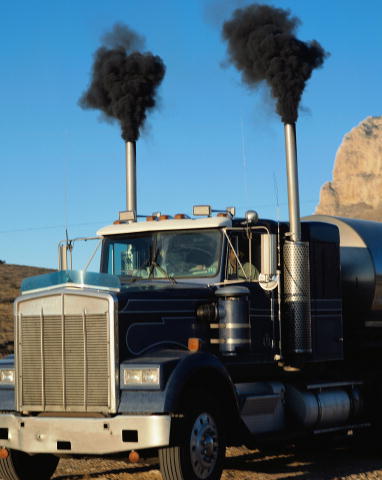Atmospheric black carbon concentrations
Atmospheric black carbon concentrations
The atmospheric levels of black carbon, a major short-lived climate pollutant, have decreased dramatically in California since the 1960s.
Black carbon is a light-absorbing particle in the air that contributes to climate change by releasing heat energy into the atmosphere. Black carbon is the second most important contributor to global warming and is considered a short-lived climate pollutant. Black carbon is removed from the atmosphere after a few days or weeks by rain and by deposition. However, during the time that black carbon particles are in the atmosphere, they can cause greater warming effects than carbon dioxide. For example, 1 ton of black carbon has a warming effect equal to 900 tons of carbon dioxide over a 100-year period. Therefore, reducing its emissions can help delay unprecedented warming due to carbon dioxide emissions. Black carbon is a component of a type of air pollution called PM2.5 (fine particulate matter that is 2.5 microns or less in diameter) that has been linked to respiratory and cardiovascular diseases. For more information, download the Atmospheric Black Carbon Concentrations chapter.
Black carbon deposition on snow in California affects the rate that the snowpack melts, and then the state's water supplies.

Credit: Peter McBride
What does the indicator show?
-
Annual average black carbon concentrations in California have dropped markedly since the 1960s, by about 90 percent.
-
This dramatic decline occurred despite increasing consumption of diesel fuel, the largest source of black carbon emissions from human-related activities.
Why is this indicator important?
-
As with other short-term climate pollutants, black carbon emission reductions present an opportunity to slow the rate of regional and global warming in the near term. Black carbon contributes to warming by directly absorbing solar energy and releasing it as heat.
-
Black carbon particles that deposit on snow, glaciers, and ice darken these light surfaces and cause them to absorb more sunlight and melt faster. This could significantly affect California’s water supplies, which rely heavily on snowmelt runoff in the springtime from the Sierra Nevada.
-
Less snowmelt runoff, combined with warmer temperatures over already dry areas, increases wildfire risks — which can in turn release more black carbon particles.
-
In addition to reduced climate change impact, reduced black carbon emissions especially benefits communities along freight corridors and near ports and railyards where the highest concentrations of diesel particulates occur.
-
Overall, the reduction in black carbon concentrations in the last 50 years has prevented an estimated 5,000 premature deaths in the state each year, while also delivering important climate benefits.
What factors influence this indicator?
-
Commonly known as soot, black carbon is emitted by diesel-fueled vehicles, industrial processes, residential fireplaces and woodstoves. Wildfires are its largest natural source.
-
California Air Resources Board emission standards and restrictions on diesel engines and biomass burning have significantly reduced atmospheric black carbon concentrations across the state.
Dramatic declines in particulate emissions from heavy-duty trucks have led to lower
atmospheric black carbon concentrations; however, emissions from older diesel-powered trains continue to be a significant source.
Credit: US Environmental Protection Agency(diesel truck), Pixabay(train)
Additional resources
- California Air Resources Board (CARB), GHG Short-Lived Climate Pollutant Inventory
- California Air Resources Board (CARB), Short-Lived Climate Pollutants
- US Environmental Protection Agency (USEPA), Black Carbon



